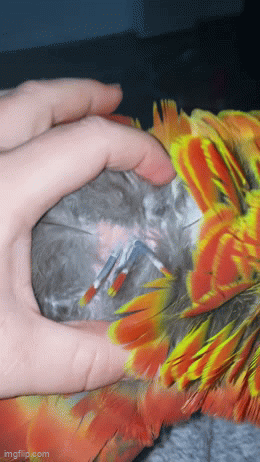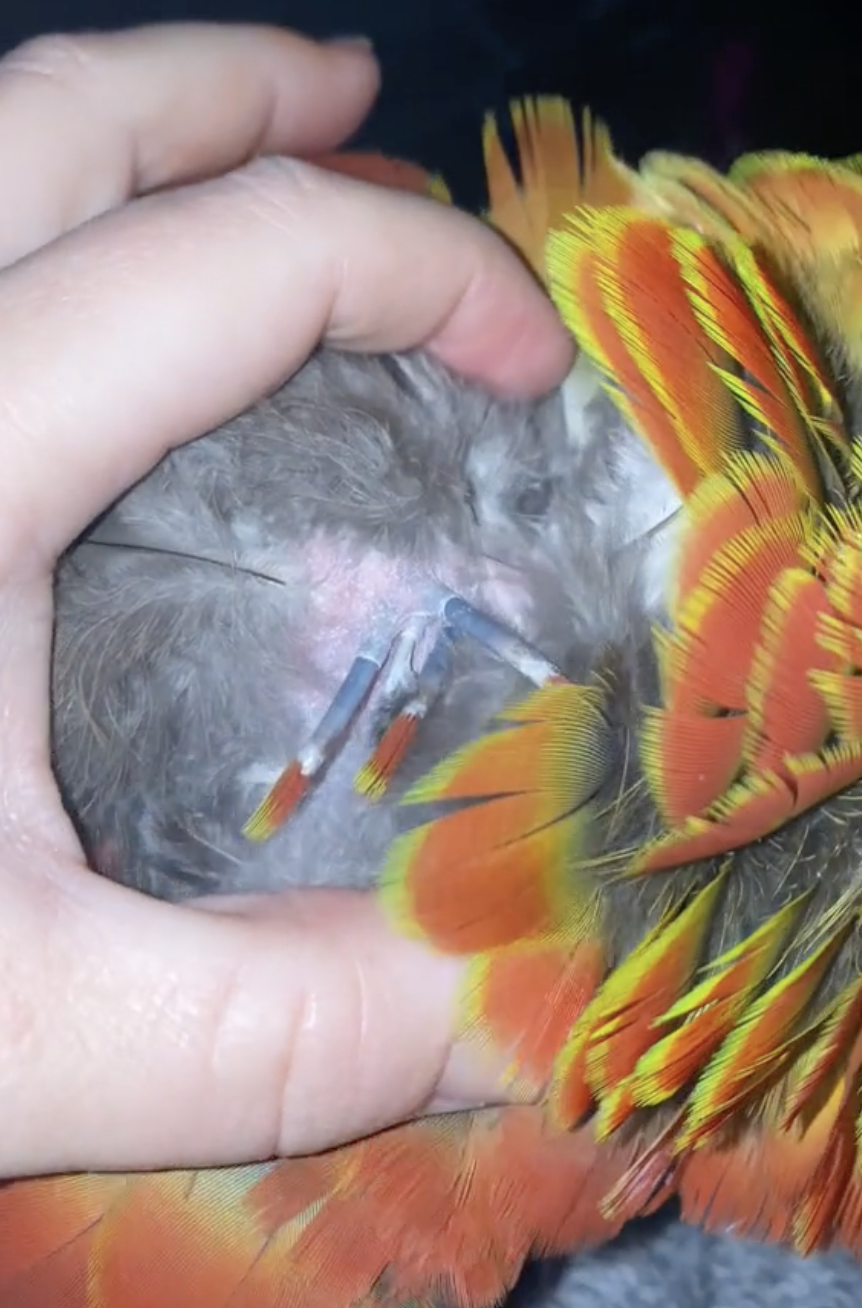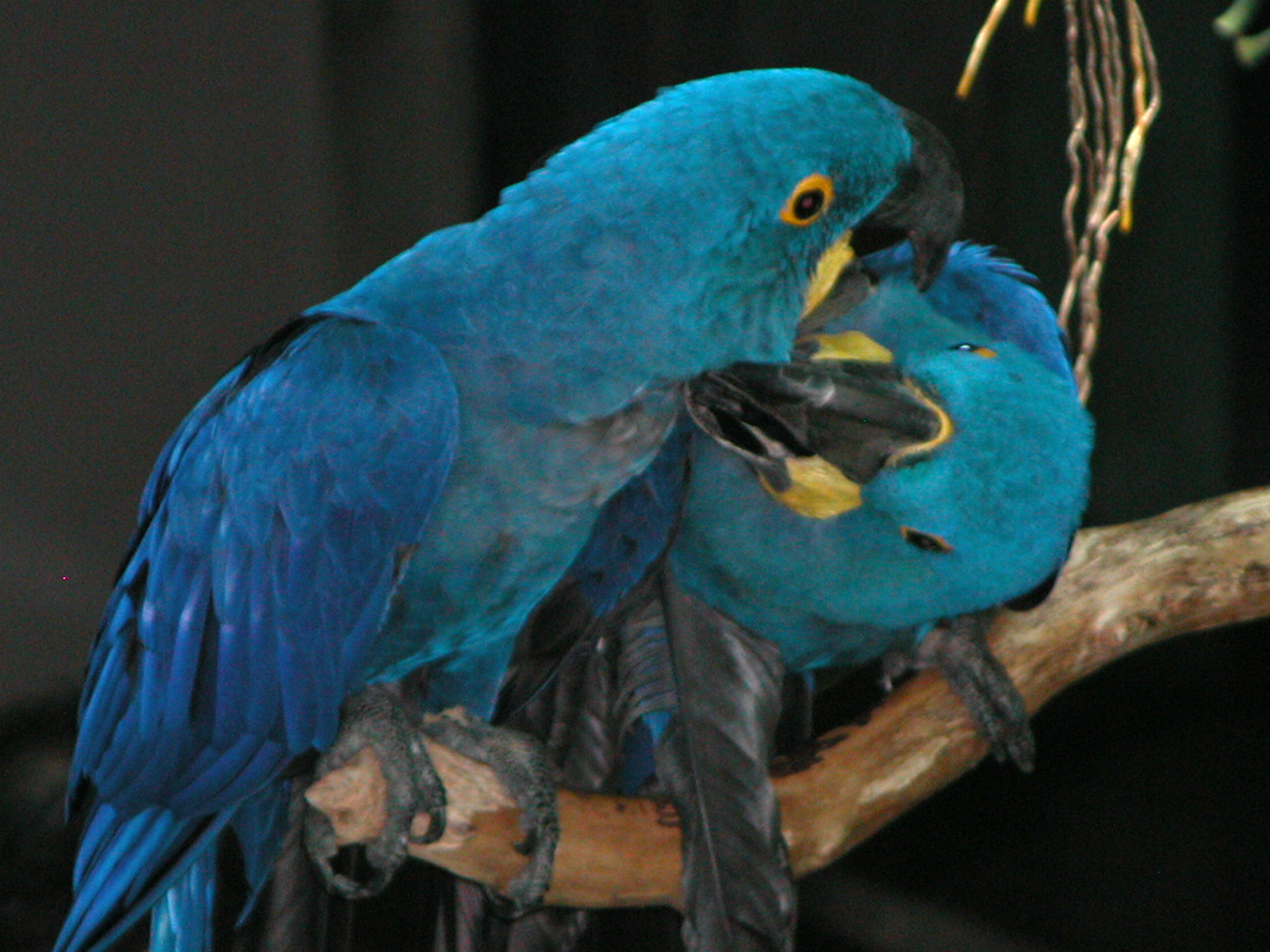@shelbythemacaw A pin feather, often seen in parrots and other birds, is a new feather that is in the process of growing and developing. It plays a crucial role in the bird's life, particularly in relation to molting, which is the process of shedding and regrowing feathers. Understanding Pin Feathers 1. Formation and Structure: Pin feathers, also known as blood feathers, form within a protective casing. This casing is made of keratin, the same material as the feather itself, and it initially envelops the entire emerging feather. As the feather grows, it pushes its way out of the casing, which often appears as a waxy tube. These emerging feathers are easily recognisable due to their thin, elongated appearance. 2. Blood Supply: During their initial growth phase, pin feathers are supplied with blood to support their development. This is why they are often referred to as blood feathers. The blood supply is critical for the feather’s growth but recedes once the feather reaches maturity, leaving the mature, dead keratinised structure we commonly recognise as a feather. 3. Sensitivity and Vulnerability: Pin feathers are quite sensitive and can be painful to the bird if handled improperly. Due to the blood supply, they can also bleed profusely if broken or damaged. This vulnerability requires careful handling, especially during grooming or when the bird is experiencing stress. Role in Molting 1. Molting Process: Parrots, like all birds, periodically molt their feathers, shedding the old and allowing new growth. This process is essential for maintaining healthy plumage, which is crucial for flight, insulation, and even social signaling. 2. Sequential Molting: Parrots often molt in a specific sequence, which ensures that they don't lose too many feathers at once, particularly those critical for flight. This sequential molting helps maintain their ability to fly and regulate body temperature. 3. Impact on Appearance and Behaviour: During molting, a parrot’s appearance can change, sometimes looking somewhat scruffy due to the mixture of old and emerging feathers. They might also show changes in behaviour, such as increased preening or irritation due to the discomfort of growing pin feathers. Importance for Parrot Owners 1. Care and Maintenance: For parrot owners, understanding the nature of pin feathers is essential. Gentle handling during molting periods is important, as is ensuring the bird's diet supports healthy feather growth. 2. Health Monitoring: Observing the state of a parrot’s pin feathers can offer insights into their health. Abnormalities in feather growth, such as persistent pin feathers or excessive loss of feathers, can indicate nutritional deficiencies or health issues. 3. Social Grooming: In the wild, parrots often engage in social grooming, which includes helping each other with hard-to-reach pin feathers. Pet parrots might seek this attention from their human caregivers, so learning how to safely assist in grooming can strengthen the bond between the parrot and its owner. In conclusion, pin feathers in parrots are more than just a stage in feather development; they are a vital aspect of a bird's life cycle, reflecting health, facilitating critical functions like flight and insulation, and playing a role in social interactions. For parrot owners, understanding and properly managing these delicate structures is a key aspect of effective and compassionate bird care.
original sound - Shelby The Macaw 







